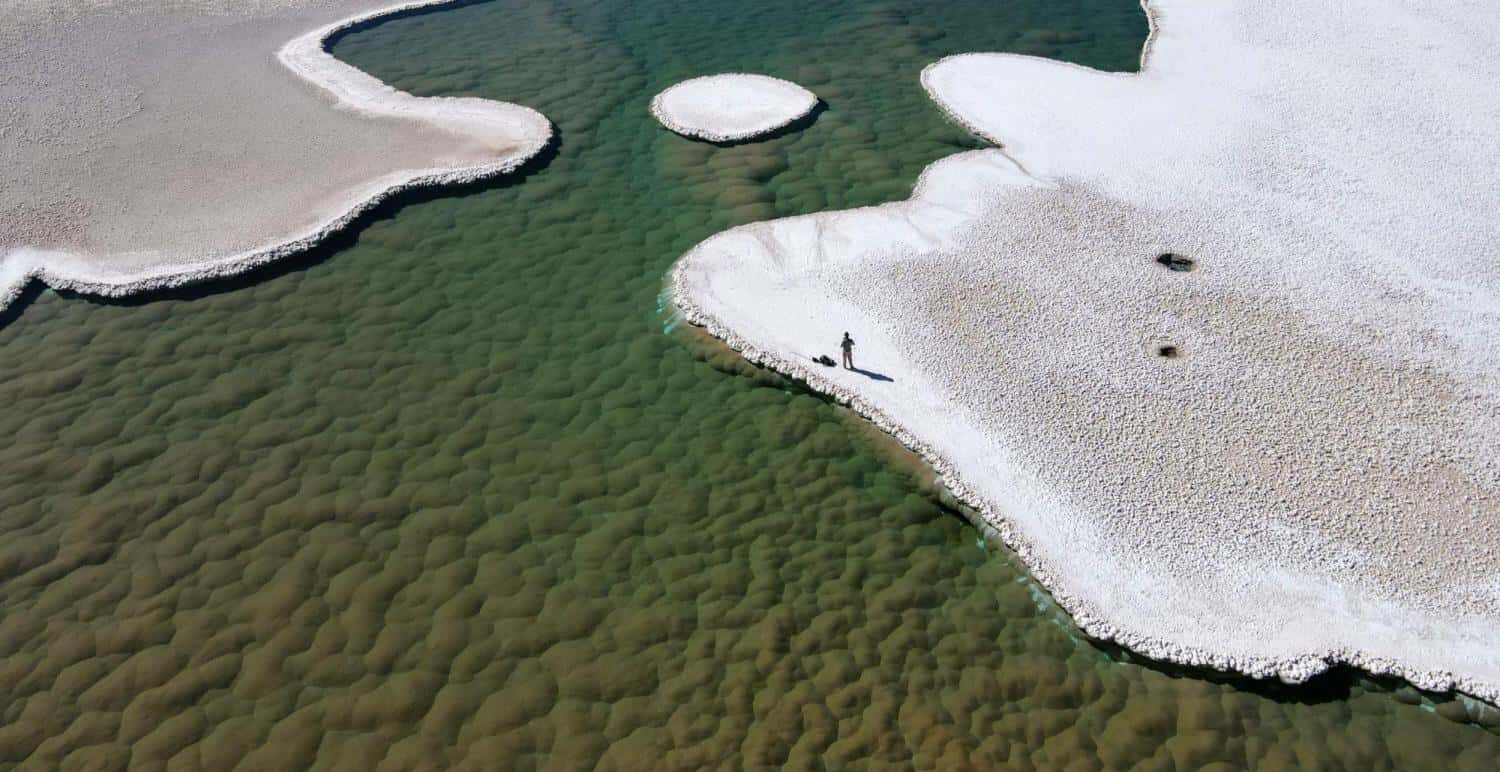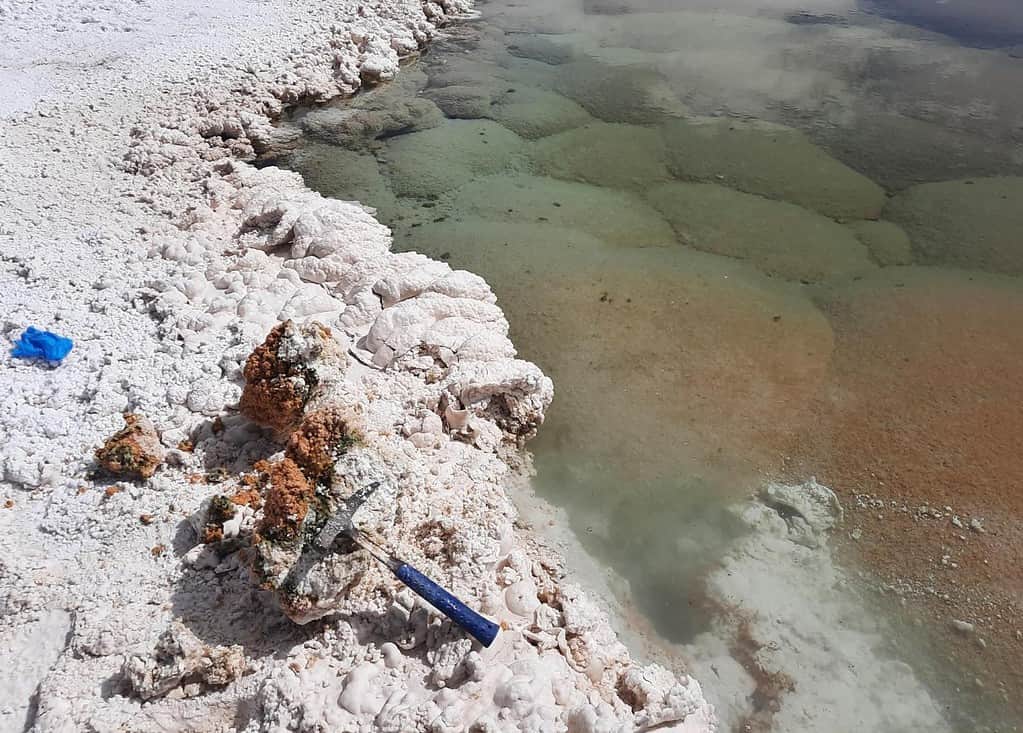Scientists have documented what could be a unique kind of ecosystem on Earth and a possible window into the earliest stages of life on the planet. The environment, previously unknown to science, is made up of a system of lagoons surrounded by salt plains in Argentina’s Puna de Atacama, a high plateau desert. It’s also similar to what the Earth would have been like 3.5 billion years ago — and might even bear similarities to ancient Mars.

It’s one of the driest environments on Earth. It rarely rains and sunlight is harsh, creating an environment where only a few plants and animals can survive. But the lagoons are home to something else: stromatolites, complex microbial communities that create giant mounds of rock as they grow, similar to corals building a reef millimeter by millimeter.
The preliminary observations by geologist Brian Hynek and his team at the University of Colorado Boulder suggest that these communities could be similar to the stromatolites that lived during a period in Earth’s history called the Archaean, a geological eon 4000–2500 million years ago. Back then, oxygen was almost non-existent in the atmosphere.
“This lagoon could be one of the best modern examples of the earliest signs of life on Earth. It’s unlike anything I’ve ever seen or, really, like anything any scientist has ever seen,” Hynek, professor in the Laboratory for Atmospheric and Space Physics (LASP), said in a news release. “It’s just amazing that you can still find undocumented things like that on our planet.”
A demanding journey
Throughout his career, Hynek has ventured into some of the harshest environments on Earth to explore the potential for life to exist on extraterrestrial planets and moons. He has ascended to the summit of Ojos del Salado, the world’s tallest active volcano on the border of Argentina and Chile, and has undertaken expeditions to Antarctica in pursuit of fallen meteorites.
In April 2022, Maria Farías, a microbiologist, brought Hynek to one of her study sites in northwest Argentina. To get there, they drove nine hours on a dirt road then stayed in a village of 35 people who rely on a single spring for water. On his last night in town, he was looking at satellite images of the surrounding desert and saw what looked like a network of lagoons.
Intrigued, he and Farias drove as far as they could and then hiked in the blazing sun. “In some places, we were sinking up to our knees in salt slush,” he said. When they arrived at the lagoon, Hynek knew it was something special. The network of 12 lagoons stretched over about 25 acres. Beneath the water, Hynek could see mounds of green growth — the ancient stromatolites.
Life on Earth, and Mars
Stromatolites, in general, refer to various microbial communities linked to rock layers. Such formations can still be found elsewhere on Earth today, such as off the coast of the Bahamas. Contemporary stromatolites, though, typically exhibit modest dimensions and grow passively by capturing particles like sand and detritus suspended in the ocean.
Ancient stromatolites could, in contrast, reach heights of up to 20 feet. They actively absorbed calcium and carbon dioxide from the surrounding water, leading to the precipitation of minerals around them. The formations in the Atacama lagoons have a closer resemblance to some of the Archaean eon communities than to any currently existing life on Earth.

Their rocky layers were built mainly from gypsum, a common mineral found in stromatolite fossils but absent in almost all modern forms of stromatolites. Biologically, they were formed by an outer layer of cyanobacteria (photosynthetic microbes) and a pinkish core rich in archaea — single-celled organisms that are often found in Earth’s extreme environments.
“We think these mounds are actually growing from the microbes, which is what was happening in the oldest ones,” Hynek said. It’s not clear to the researchers why they formed at this harsh location. They believe the lagoon environment may resemble conditions on ancient Earth. The waters are salty and acidic and are exposed to high levels of solar radiation.
The stromatolites could provide scientists with answers on how life might have started on Mars — similar to Earth billions of years ago. “If life ever evolved on Mars to the level of fossils, it would have been like this. Understanding these modern communities on Earth could inform us about what we should look for as we search for similar features in the Martian rocks,” Hynek said.
Study on a deadline
The researchers hope to do more experiments to confirm that these stromatolites are, indeed, actively building their rock formations, and to explore how the microbes survived in such harsh conditions. However, they might be running out of time. The area has been leased to a lithium mining company. When drilling starts, the lagoons could be severely transformed.
“This entire, unique ecosystem could be gone in a matter of years,” Hynek said. “We’re hoping that we can protect some of these sites, or at least detail what’s there before it’s gone or disturbed forever.”
The preliminary findings were presented this month at the 2023 meeting of the American Geophysical Union in San Francisco.






